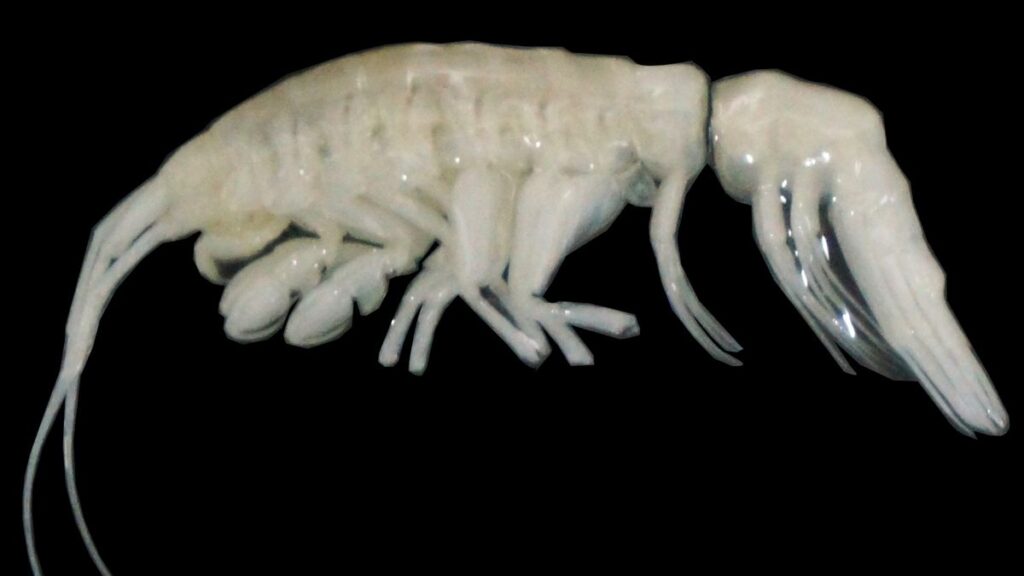A ghostly white, unusually large predator has been discovered deep inside one of Earth’s deepest ocean trenches.
Found at a staggering depth of 25,900 feet (7,902 meters) in the eastern Pacific Ocean’s Atacama Trench, researchers have discovered a new species of large predatory amphipod, Dulcibella camanchaca.
This shrimp-like crustacean, which is 1.57 inches (4 centimeters) long — a giant among amphipods — has specialized appendages to hunt smaller prey lurking at the same depths.
The creature’s discovery — details of which were published Nov. 27 in the journal Systematics and Biodiversity — represents the first known large, active predator of its kind in one of the world’s deepest oceanic habitats.
D. camanchaca was recovered by scientists from the Woods Hole Oceanographic Institution (WHOI) and Chine’s Instituto Milenio de Oceanografía (IMO) during the 2023 Integrated Deep-Ocean Observing System (IDOOS) Expedition, which aims to explore and understand the tectonic and oceanographic processes of the region through multiple deep sea observations over 5 years.
“Dulcibella camanchaca is a fast-swimming predator that we named after ‘darkness’ in the languages of the peoples from the Andes region to signify the deep, dark ocean from where it predates,” study co-lead author Johanna Weston, a hadal ecologist at WHOI, said in a statement.
The hadal zone describes the deepest region of the ocean, describing everything under 19,680 feet (6,000 metres below the surface.
The name “Dulcibella” pays homage to Dulcinea del Toboso, the protagonist’s unrequited love interest and muse in the Spanish novel “Don Quixote”.
Related: Why do animals keep evolving into crabs?
The Atacama Trench is one of the deepest on Earth, reaching about 26,460 feet (8,065 meters) below sea level. It stretches approximately 3,666 miles (5,900 km) in length, running parallel to the coasts of Peru and Chile.
During the IDOOS exhibition, the specimens were collected with a special lander vehicle that carries scientific equipment, including baited traps, to and from the surface.

Four individual specimens of the newly discovered species were collected, frozen, and later analysed genetically. DNA analysis revealed this tiny predator is not only a new species, but also a new genus (the taxonomic classification above species).
The discovery highlights the biodiversity in this extreme environment, which is characterized by intense pressure and darkness. The Atacama Trench sits beneath nutrient rich surface waters, and is far removed from other hadal environments, according to the statement. This means it has a wide variety of native species.
“More discoveries are expected as we continue to study the Atacama Trench,” Carolina González, a researcher with the IMO and co-lead author of the study, said in the statement. Exploration may reveal more species, as well as a deeper understanding of how these enigmatic ecosystems respond to man-made threats, such as pollution and climate change.
